 |

 |
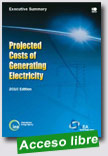 |
Projected Costs of Generating Electricity: 2010 Edition - Executive Summary
Nuclear Energy Agency (NEA), March 2010, 13 p.
This joint report by the International Energy Agency (IEA) and the OECD Nuclear Energy Agency (NEA) is the seventh in a series of studies on electricity generating costs. It presents the latest data available for a wide variety of fuels and technologies, including coal and gas (with and without carbon capture), nuclear, hydro, onshore and offshore wind, biomass, solar, wave and tidal as well as combined heat and power (CHP). It provides levelised costs of electricity (LCOE) per MWh for almost 200 plants, based
|
on data covering 21 countries (including four major non-OECD countries), and several industrial companies and organisations. For the first time, the report contains an extensive sensitivity analysis of the impact of variations in key parameters such as discount rates, fuel prices and carbon costs on LCOE. Additional issues affecting power generation choices are also examined.
The study shows that the cost competitiveness of electricity generating technologies depends on a number of factors which may vary nationally and regionally. Readers will find full details and analyses, supported by over 130 figures and tables, in this report which is expected to constitute a valuable tool for decision makers and researchers concerned with energy policies and climate change
Extraído de:
http://www.nea.fr/pub/egc/
|
 |
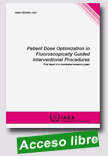 |
Patient Dose Optimization in Fluoroscopically Guided Interventional Procedures
IAEA TECDOC Series, 2010, 110 p.
This publication reports the results of a recent IAEA coordinated research project on patient dose optimization in fluoroscopically guided interventional procedures. The optimization of radiological protection of patients undergoing medical exposure has become an important issue, since many surgical procedures have increasingly been replaced by interventional ones, which can cause higher radiation exposure. The summary
|
presents detailed information on the assessment of high skin doses, analyses the factors causing radiation skin injury and makes recommendations on how to avoid or reduce the likelihood of such complications
Extraído de:
http://www-pub.iaea.org/MTCD/publications/PubDetails.asp?pubId=8176
|
 |
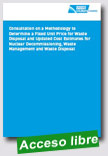 |
Consultation on a Methodology to Determine a Fixed Unit Price for WasteDisposal and Updated Cost Estimates for Nuclear Decommissioning, Wast Management and Waste Disposal
Department of Energy & Climate Change (UK), March 2010, 109 p.
On 25 March 2010, the Government published this consultation on a Methodology to Determine a Fixed Unit Price for Waste Disposal and Updated Cost Estimates for Nuclear Decommissioning, Waste Management and Waste Disposal.
The consultation document sets out: Changes to the
|
Government’s policy framework for setting a Fixed Unit Price as a result of feedback from stakeholders received during the pre-consultation process; The main stages of the proposed methodology to determine a Fixed Unit Price and worked examples of how it would be calculated using this methodology and The Government’s updated estimates of the costs for decommissioning, waste management and waste disposal.
We are seeking responses to the questions contained in the consultation document. The responses will assist the Government in developing a finalised approach on the issues covered by the consultation. The finalised approach on a methodology for the Fixed Unit Price will provide clarity on how a Fixed Unit Price will be determined for an operator of a new nuclear power station
Extraído de:
http://www.decc.gov.uk/en/content/cms/consultations/
nuc_waste_cost/nuc_waste_cost.aspx
|
 |
 |
|
nuclear security Emphasis is placed on the implementation of these requirements and recommendations in States. On the basis of this guide, each university should be able to develop its own academic programme tailored to suit the State’s educational needs in the area of nuclear security and to meet national requirements.
Extraído de:
http://www-pub.iaea.org/MTCD/publications/PubDetails.asp?pubId=8363
|
 |
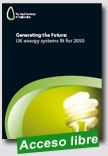 |
Generating the Future: UK energy systems fit for 2050
The Royal Academy of Engineering (UK), March 2010, 32 p.
Fundamental restructuring of the UK's entire energy system is unavoidable if it is to meet future energy demand while reducing greenhouse gas emissions by 80 per cent by 2050, even assuming that energy demand in all sectors can be substantially reduced, according to a report published today by the Royal Academy of Engineering. If we are to achieve this, the scale of the undertaking will require the biggest peacetime programme of investment and social change the UK has ever seen, says the Academy.
|
Generating the Future: UK energy systems fit for 2050 considers four possible energy scenarios that could meet the 2050 emissions reduction target, each of which demonstrate that there is no single 'silver bullet' solution that will deliver the required 80 per cent emissions cut. Demand reductions through a combination of increased efficiencies and behavioural change will be essential. The scale of the engineering challenge is massive - the country will need to exploit its renewable energy resources to the maximum and supplement this with other low-carbon sources including nuclear power and coal- or gas-fired generation fitted with carbon capture and storage (CCS).
"There is no more time left for further consultations or detailed optimisation and no time to wait for new technical innovations. Infrastructure on this scale doesn't happen on political timescales," says Dame Sue Ion, chair of the Academy's energy scenarios working group. "It takes decades to prove and roll out large-scale major infrastructure so only those low-carbon technologies we already know of can help us to meet the 2050 targets."
Extraído de:
http://www.raeng.org.uk/news/releases/shownews.htm?NewsID=553 |
 |
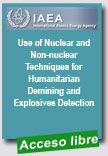 |
Use of Nuclear and Non-nuclear Techniques for Humanitarian Demining and Explosives Detection
IAEA Proceedings CD Series, 2010, s. p.
There is increasing interest in the detection of explosives and illicit materials. This publication examines nuclear techniques in the field of humanitarian demining and illicit material detection. It presents the latest experimental results on neutron based equipment, details issues for improvement and identifies challenges and activities for future developments. The recommendations and guidelines, which are provided by developers of demining techniques and experts in illicit material detection, serve as a useful basis to determine the direction of future research activities in this field.
|
Extraído de:
http://www-pub.iaea.org/MTCD/publications/PubDetails.asp?pubId=8112
|
 |
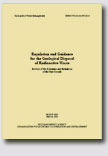
|
Regulation and Guidance for the Geological Disposal of Radioactive Waste - A Review of the Literature and Initiatives of the Past Decade
Nuclear Energy Agency (NEA), 24 February 2010, 40 p.
This paper reviews the evolution of regulatory issues in the field of geological disposal of radioactive waste over the past decade or so focusing on the areas of radioactive waste disposal criteria, performance assessment trends and the conduct of the regulatory process.
This publication is also available in French as: Réglementation et lignes directrices pour l'évacuation des déchets radioactifs en formation géologique - Revue de la littérature et des initiatives de la dernière décennie: http://www.nea.fr/html/rwm/reports/2010/nea6406-regulation-guidance-FR.pdf
|
Extraído de:
http://www.nea.fr/html/rwm/reports/2010/nea6405-regulation-guidance-ENG.pdf
|
 |
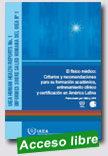 |
El físico médico: Criterios y recomendaciones para su formación académica, entrenamiento clínico y certificación en América Latina
Informes sobre salud humana del OIEA, 2010, 77 p.
Durante el último decenio, el Organismo Internacional de Energía Atómica (OIEA) ha promovido un considerable número de actividades de cooperación técnica y del programa ordinario vinculadas al establecimiento de programas educativos en radiofísica médica en América Latina. A pesar de estos esfuerzos, la cantidad de físicos médicos en las diversas áreas
|
de la medicina radiológica (radioterapia, medicina nuclear, radiodiagnóstico) sigue siendo insuficiente. Adicionalmente, muchos de los físicos médicos actualmente vinculados a los hospitales poseen un entrenamiento inadecuado y sus condiciones profesionales (situación, salario, etc.) quedan muy lejos de las de sus colegas en países industrializados. Esto trae como resultado que la profesión de física médica clínica no sea suficientemente atractiva en América Latina. Las previsiones a mediano plazo indican que la evolución continua hacia una atención médica basada cada vez más en las altas tecnologías hará que se requieran aún más físicos médicos bien entrenados, lo que empeoraría la situación actual.
Ante la problemática expuesta, y considerando el marcado interés de los Estados Miembros del OIEA por encontrar una solución de consenso y una cooperación efectiva que permitan resolver este problema, se inició en 2005 el proyecto ARCAL LXXXIII, Fortalecimiento del desempeño de los físicos médicos en América Latina. Como parte de sus actividades se integró un grupo de expertos con la tarea de evaluar la problemática de la física médica en la región y elaborar recomendaciones, contenidas en este documento, que permitieran armonizar
la formación y el reconocimiento profesional de los físicos médicos.
Extraído de:
http://www-pub.iaea.org/MTCD/publications/PDF/P1424_S_web.pdf
|
 |
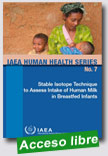 |
Stable Isotope Technique to Assess Intake of Human Milk in Breastfed Infants
IAEA Human Health Series, 2010, 67 p.
This publication was developed by an international group of experts as an integral part of the IAEA’s efforts to contribute to the transfer of technology and knowledge in nutrition. Its aim is to assist Member States in their efforts to combat malnutrition by facilitating the use of relevant nuclear techniques. The stable (non-radioactive) isotope technique has been developed to assess intake of human milk in breastfed infants over 14 days. The practical application of the stable isotope technique, based on analysis of deuterium by Fourier transform infrared spectrometry (FTIR), are presented in this book.
|
|
 |
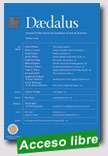 |
Alternative Nuclear Futures
Daedalus, Winter 2010, 12 p.
Our crystal ball is not clear enough to predict with confidence whether the global nuclear future will be characterized by peace and prosperity or by conflict and destruction. But we do believe that the choices made in the coming few years will be crucial in determining whether the world can have more nuclear power without more nuclear weapons dangers in the future. Here we first briefly outline five major security challenges posed by the potential expansion and spread of nuclear power. Second, we
|
discuss the major players whose decisions and interactions will determine which policies are adopted and which are rejected as the international community seeks solutions to these five security challenges. Finally,we sketch a number of alternative nuclear futures to demonstrate the truly
Extraído de:
http://www.mitpressjournals.org/doi/pdf/10.1162/
daed.2010.139.1.126?cookieSet=1
|
|
|
|
|
|
| |
|
